The Concept of Position Rotary Switches
Position rotary switches are electrical components that regulate current flow in different circuits by rotating a central shaft to distinct positions. Each position corresponds to a specific circuit, making these switches suitable for applications requiring the selection of various operating modes, signal inputs, or connections. They find common use in industrial machinery, commercial equipment, and household appliances that necessitate swift and dependable setting adjustments.
These switches operate by utilizing a set of contacts that link to the circuits under their control. Upon turning the switch to a particular position, the contacts associated with that position are connected, enabling the current to pass through. Rotating the switch to a different position alters the bridged contacts, thereby modifying the circuit's trajectory and its function accordingly.
Position rotary switches are crafted to be robust, offering a substantial number of operational cycles to ensure longevity even under strenuous conditions. Available in diverse configurations with varying position numbers, they can be single-pole or multi-pole, providing versatility across different applications. Electricians, engineers, and machinery operators rely on these switches for tasks ranging from basic on/off functions to intricate control operations.
Varieties of Position Rotary Switches
Position rotary switches are available in several types to cater to different needs and scenarios. Here are some common variants:
-
Binary Position Rotary Switch: This type manages multiple circuits with a binary outcome, suitable for scenarios like home appliances or industrial control panels requiring simple on/off functions.
-
Multi-Position Rotary Switch: These switches offer more than two positions, commonly used in devices such as audio equipment to select various functions by adjusting the switch to different settings.
-
Rotary Encoders: Although not conventional switches, rotary encoders gauge rotation angle and direction, frequently applied in robotics or precise motor control.
-
Industrial Rotary Selector Switches: Engineered for heavy-duty usage in industrial settings, these switches boast sturdy construction and can handle high currents and voltages. They are prevalent in motor controls or machinery components where dependable operation is critical.
Guide to Selecting Position Rotary Switches
Choosing the appropriate Position Rotary Switch for your business involves contemplating various factors such as intended application, environmental conditions, material durability, and additional features enhancing usability. For businesses engaged in manufacturing electrical goods or offering technical solutions, opting for switches that not only match the required functionality but also ensure long-term reliability is essential.
Factors like size limitations, ease of use, and voltage capacity should be taken into consideration when evaluating applications in home appliances or industrial control systems. For instance, a plastic rotary switch might suffice for low-voltage applications in non-industrial settings, while a metal switch could be more suitable for high-power industrial environments prioritizing sturdiness.
The choice of materials significantly impacts longevity and safety; metal or ceramic options are preferable in high-temperature or high-stress environments, whereas plastic or PC (Polycarbonate) materials are suitable for lighter applications or where non-metallic construction is advantageous.
Additional features like circuit control and color-coded indicators can influence decision-making. Businesses should assess whether these features align with their specific requirements for circuit management and identification.
Lastly, brand reputation and customization possibilities can aid in decision-making – selecting suppliers offering reputable brands and tailored solutions ensures finding the right match for the business's needs.
Exploring Position Rotary Switches on Alibaba.com
Alibaba.com serves as a global marketplace connecting businesses with a wide array of Position Rotary Switches suitable for diverse applications. With over two decades of experience in facilitating B2B transactions across more than 190 countries, Alibaba.com has established itself as a dependable platform where buyers can access products from trusted suppliers worldwide.
The platform's user-friendly interface streamlines the process of finding the suitable switch by enabling users to filter products based on color, material, smart capabilities, applications, functions, and even customized support options. This level of customization ensures that every business can discover a product meeting its specific requirements without compromising on its needs.
Furthermore, Alibaba.com provides added assurance through its Trade Assurance service, safeguarding payments until delivery confirmation. This commitment to security, combined with features supporting convenient mobile purchases and communication in local languages, underscores Alibaba.com's mission of enhancing accessibility and convenience in international trade for small and medium-sized enterprises globally.
Frequently Asked Questions about Position Rotary Switches
What is the purpose of a position rotary switch?
Position rotary switches are utilized to regulate electrical circuit functions by selecting various connection points, which can differ in resistance or composition based on the application.
How can I identify the suitable type of position rotary switch for my application?
Assess the electrical load requirements, material compatibility, environmental conditions, and operational necessities of your application to select the appropriate type of position rotary switch.
Can position rotary switches be personalized for specific applications?
Indeed, many suppliers offer customization options for position rotary switches, enabling businesses to specify materials, colors, and functions to meet their unique needs.
Which materials are commonly used in constructing position rotary switches?
Position rotary switches are typically crafted from materials such as plastic, metal (e.g., steel or aluminum), and occasionally ceramics for specialized applications necessitating high-temperature resistance.
How can I ensure that a position rotary switch will fit my control panel?
Refer to the product specifications for dimensional measurements and cut-out sizes to verify compatibility with your control panel or equipment.
What sets apart a single-pole from a double-pole position rotary switch?
Single-pole switches manage a single circuit and are common in simpler applications, while double-pole switches oversee two distinct circuits, suitable for more complex control needs.
Are safety features available for position rotary switches?
Some position rotary switches are equipped with safety elements like circuit breakers or key locks to prevent inadvertent activation or unauthorized usage.
How do I select the appropriate contact material for my position rotary switch?
Contact materials can include silver (Ag), copper (Cu), or gold (Au), chosen based on the switch's application and the electrical load it will handle.
What customization options exist for position rotary switches on Alibaba.com?
Customization options range from material selection and contact material to LED indicators and specialized functions tailored to specific requirements.
How does the number of poles on a position rotary switch affect its functionality?
The number of poles on a position rotary switch correlates with the quantity of separate electrical circuits it can regulate. More poles allow for complex switching operations but may increase the switch's size and cost.











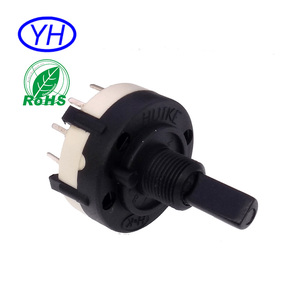


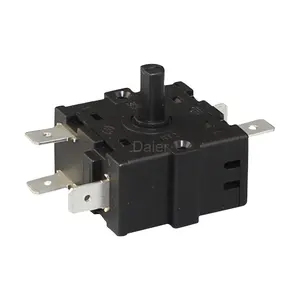






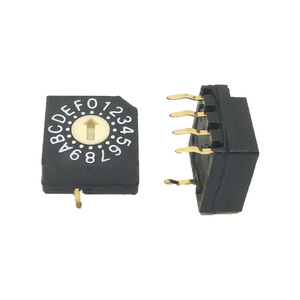
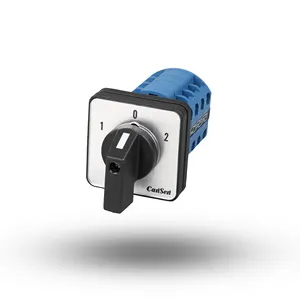




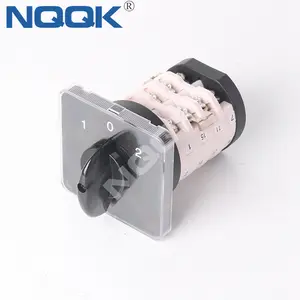




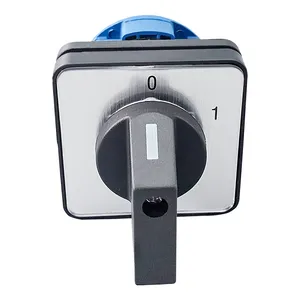






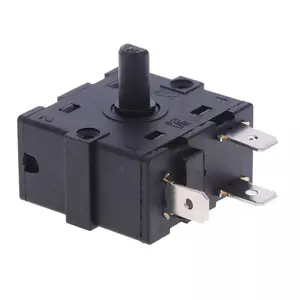

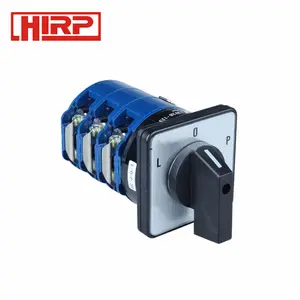







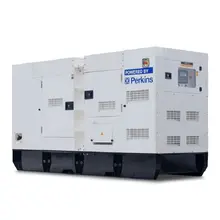






















 浙公网安备 33010002000092号
浙公网安备 33010002000092号 浙B2-20120091-4
浙B2-20120091-4